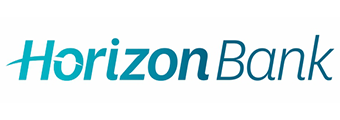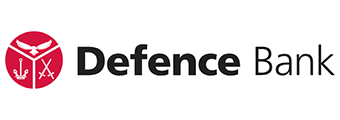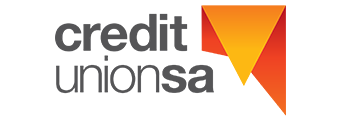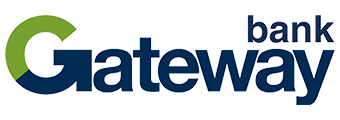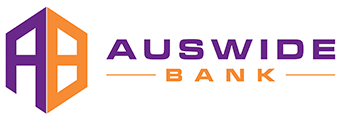Learn more about children savings accounts
Some kids’ savings accounts can be opened from birth, while others may have a minimum age requirement of 5, 6, or even 12. Typically, if your child is under the age of 12, the account will need to be opened for them. When your child turns the maximum age limit (usually between 14-18 years), the account will automatically switch to a default savings account offered by the bank.
Savings accounts are a great way to teach kids valuable lessons that will come in handy when they are grown up and financially independent. They can help kids learn about money, saving, budget, and the process of banking.
Children’s accounts usually allow free deposits and withdrawals. Many will offer a high level of bonus interest when certain conditions are met. These conditions generally include making regular deposits and avoiding withdrawals. Essentially they’re designed as an incentive to keep growing the account balance while they’re young.
The benefit of these two features are they teach kids that if they don’t touch their savings, they will be rewarded with bonus interest, ultimately giving them the incentive not to withdraw money unnecessarily.
While interest rates do vary depending on which bank you go with, there are plenty of lenders offering no fees and a range of features suited to kids through children’s savings accounts.
How can a savings account help your child save money?
While putting pocket money and birthday money in a piggy bank can seem like a great option to begin with, a kids savings account can actually help the money grow. All thanks to the power of compound interest.
Here is an example of how a kids savings account works.
Mary is 7 years old and has $200 saved in her piggy bank already. Plus, she earns $10 a week in pocket money.
By putting that money into a savings account with a 3.50% p.a. interest rate, and continuing to put the $10 away weekly, her savings balance would grow to approximately $6,512 by the time she is 17. Of that total, $1,112 is just in interest payments, which you wouldn’t earn from a piggy bank.
Can a parent gain interest income from their kids’ account?
Who declares interest depends on who owns or uses the funds of the account, no matter the type of account or the name it is under.
According to the ATO, website, you need to consider who:
- provides the money, such as the initial and ongoing deposits into the account
- decides how the money is spent, regardless of who it is spent on.
If you provide the money and spend it as you like, you must include the interest in your tax return.
If you hold a joint account, interest earned is divided equally among all account holders, who each declare their share of the income in their tax return.
Here are two examples that outline when a parent can and cannot gain interest income from their kids’ savings account.
1. Interest earned belongs to parent
John opens an account for his son by depositing $10,000. John is a signatory on the account as his son is five years old.
John makes regular deposits into the account and also makes withdrawals to pay for pre-school expenses.
The interest earned in the savings account is John’s.
2. Interest earned belongs to child
Sarah is nine years old and has a savings account in her name. Sarah’s mother Karen is a signatory on the account.
The funds in the account are birthday and Christmas presents from Sarah’s relatives.
Interest earned from the account are Sarah’s.
How to compare kids savings accounts
Here are the features you should look for when considering a kid’s savings account:
1. A competitive interest rate
When choosing a children’s savings account, it’s best to compare different lenders and see which one will give you the most competitive rate. The higher the interest rate, the more interest your child will earn on their total balance.
Be sure to check if there are any certain conditions that need to be met to earn the maximum interest rate each month e.g. depositing a certain amount or not making any withdrawals.
2. No monthly fees
While there may not be any account keeping fees for a children’s savings account, you should pay attention to any other fees that may be charged such as ATM access fees, withdrawal fees, overdraw fees, and so on. If you’re paying some sort of fee, it’s always worth to find out what it’s for and if it’s worth it in the long run.
3. Online learning tools and banking programs in Australia
Some banks in Australia have programs that give children direct access to online educational portals, activities, videos, games and stationery which are all helpful to teach kids about the basics of savings and personal finance.
4. Low minimum opening deposit
Kids’ savings accounts typically don’t have a minimum opening balance, as this could be a difficult requirement to meet. However, you may find some with a minimum opening deposit of between $1-$5 – it pays to do some research.
5. Maximum balance
One other thing to keep an eye out for is the maximum amount of money that can be kept in the account. For example, some kids’ savings accounts have a maximum balance of $5,000 whereas others may have $20,000, $50,000 or even $100,000.
When choosing the right savings account, consider how much money your child wants to save before selecting the right product and lender.
What are the pros and cons to kids savings accounts?
Pros
- They generally receive more interest compared to adults savings accounts. Children’s savings accounts can also earn bonus interest simply by making very small monthly deposits and not withdrawing any money.
- There are usually no fees and charges.
- Kids can learn about the importance of saving money and develop good financial habits for the future.
- The money in a kids savings account is protected by the government guarantee scheme up to $250,000 per ADI or banking license, making it a safe place to store cash.
Cons
- There are possible tax implications. If your child is under the age of 16 and earns between $120 and $420 in interest from their savings account, the bank will withhold PAYG tax at 47% (providing they don’t provide their tax file number of date of birth. This can be claimed back at the end of the financial year, however.
- There can be an age limit. Children’s accounts are usually for kids under the age of 14. Once they are older, the account will be automatically converted to a regular savings account.
- Some kids’ savings accounts have balance caps, which means the top interest rate can only be earned on balances up to a certain amount. Typically this is quite low, around $5,000.
How do you apply for a kids savings account?
A parent or legal guardian can open a children’s savings account in their child’s name or in a Trust for them.
While each account will differ slightly, you will usually need to open an account with your child if they’re under the ages of 12 or 13. This means you will be listed as a signatory on the account until they reach the maximum age restriction (14 to 17 years depending on the lender and product).
Some lenders will allow you to open a kids savings account online while others may require you to visit a local branch.
During the application process, you will need to provide:
- The child’s Medicare card, birth certificate, Australian passport, or driver’s license (if applicable)
- Full names and Australian residential addresses of the signatory and child
- Proof the signatory is the parent or legal guardian of the child (provide birth certificate or legal guardianship documents)
Children Savings Accounts
Encourage your kids to develop good money habits early by opening a children’s bank account specifically designed for young savers. The interest rates of children’s accounts can vary widely, but many offer flexibility, zero fees and a range of access options to help your kids manage their money.
We can help you narrow down your search and find the right account for your little ones. Simply use our comparison table to review and compare the interest rates, fees and other details of different children’s bank accounts from our participating providers.





